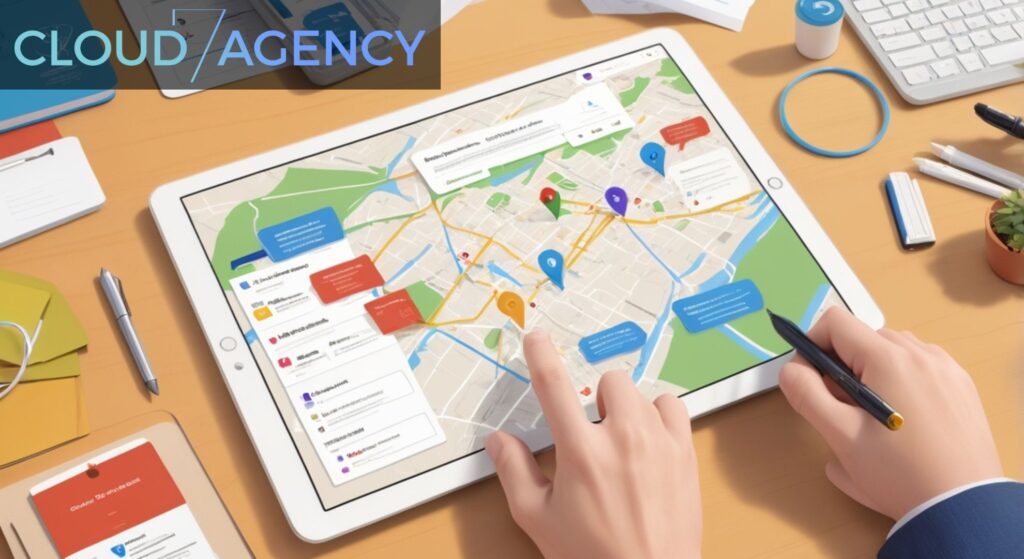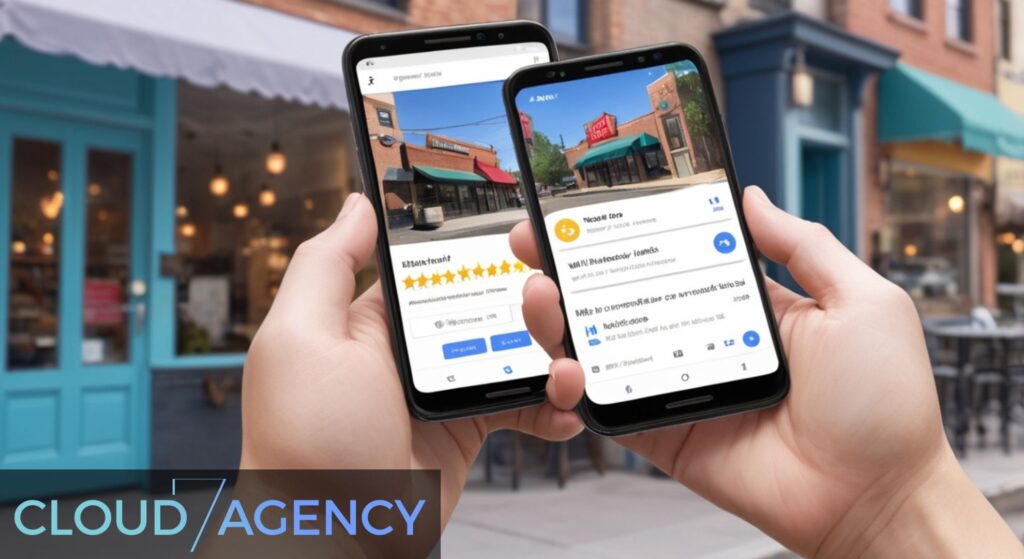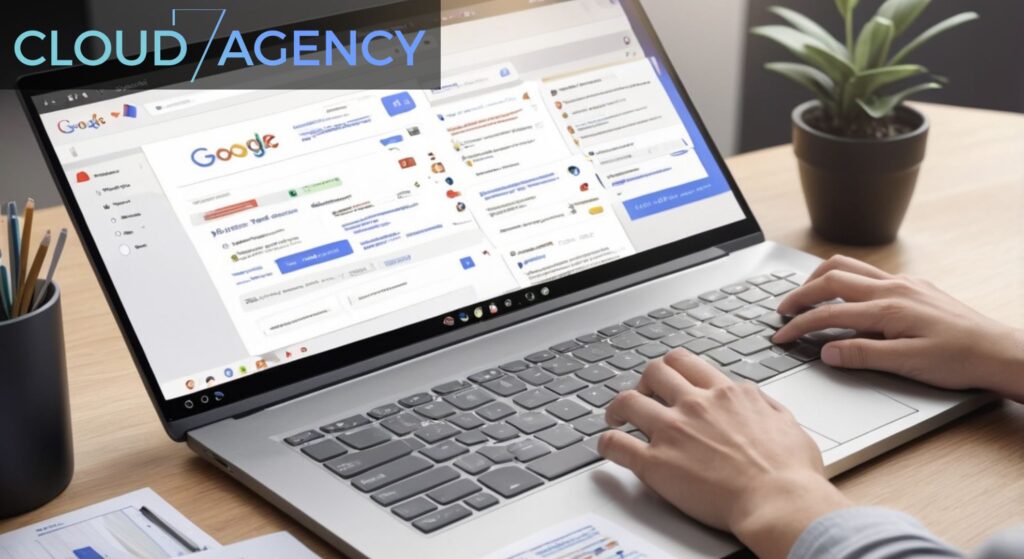Local search engine optimization has become the cornerstone of digital marketing success for businesses targeting geographically specific audiences. While achieving high rankings in local search results is crucial, the ultimate measure of success lies in converting those rankings into actual clicks and customer engagement. This is where local SEO click-through rate (CTR) becomes a critical performance indicator that can make or break digital marketing efforts.
Understanding how to improve local SEO CTR requires a comprehensive approach that goes beyond traditional SEO tactics. Local businesses face unique challenges in capturing user attention within the competitive landscape of local search results, where multiple businesses vie for the same geographic audience. The difference between a successful local SEO campaign and one that falls short often comes down to the ability to craft compelling, locally-relevant content that resonates with searchers and encourages them to take action.
The local search ecosystem has evolved dramatically in recent years, with search engines placing increasing emphasis on user experience signals, local relevance, and business credibility. Modern consumers expect immediate, accurate, and locally-relevant information when conducting searches, making it essential for businesses to optimize every aspect of their local online presence. From Google My Business listings to local directory profiles, each touchpoint represents an opportunity to improve click-through rates and drive meaningful engagement.
Improving local SEO click-through rate involves a multifaceted strategy that encompasses technical optimization, content enhancement, reputation management, and user experience improvements. Successful implementation requires understanding the psychology of local searchers, the mechanics of local search algorithms, and the specific factors that influence user behavior in local search contexts. By focusing on these elements systematically, businesses can significantly increase their ability to convert local search visibility into tangible business results.
Key Takeaways
Optimize Google My Business listings completely: Ensure all business information is accurate, comprehensive, and regularly updated. Include high-quality photos, detailed business descriptions, and current operating hours to maximize visibility and trustworthiness in local search results.
Craft compelling meta titles and descriptions: Create location-specific title tags and meta descriptions that incorporate local keywords while clearly communicating value propositions. Focus on emotional triggers and clear calls-to-action that encourage users to click through to websites.
Leverage local schema markup: Implement structured data markup to help search engines understand business information better. This includes LocalBusiness schema, review markup, and location-specific data that can enhance search result appearance and improve CTR.
Build and manage online reviews strategically: Actively encourage satisfied customers to leave positive reviews across multiple platforms. Respond professionally to all reviews and use review content to improve overall local search presence and credibility.
Create location-specific landing pages: Develop dedicated pages for each service area or location, incorporating local keywords, community information, and location-specific content that resonates with local searchers and improves relevance signals.
Monitor and analyze performance metrics: Regularly track click-through rates, impressions, and ranking positions for local keywords. Use this data to identify optimization opportunities and refine local SEO strategy for maximum effectiveness.
Understanding Local SEO Click-Through Rate Fundamentals
Local SEO click-through rate represents the percentage of users who click on business listings or website links after seeing them in local search results. This metric serves as a crucial indicator of how effectively local search presence converts visibility into engagement. Unlike traditional SEO, local CTR optimization must account for the unique characteristics of local search behavior, including the immediate intent of local searchers and the competitive landscape of location-based results.

The foundation of improving local SEO click-through rate begins with understanding the local search journey. Local searchers typically exhibit high commercial intent, often seeking immediate solutions to specific needs within their geographic area. This creates both opportunities and challenges for businesses looking to capture attention and drive clicks. The opportunity lies in the high conversion potential of local traffic, while the challenge involves standing out among multiple local competitors appearing in the same search results.
Search engines evaluate local CTR as a ranking signal, creating a positive feedback loop where improved click-through rates can lead to better rankings, which in turn can generate more impressions and additional opportunities for clicks. This makes CTR optimization not just a traffic generation strategy, but also a fundamental component of local SEO success. Understanding this relationship helps businesses prioritize CTR optimization as part of their broader local search strategy.
Effective local CTR optimization requires analyzing the complete local search ecosystem, including Google My Business listings, local pack results, organic local results, and paid local advertisements. Each of these elements presents different optimization opportunities and requires tailored approaches to maximize click-through potential. By developing a comprehensive understanding of these components, businesses can create more effective strategies for improving local SEO click-through rate across all local search touchpoints.
Optimizing Google My Business for Maximum Click-Through Impact
Google My Business optimization represents the most critical component of local CTR improvement, as GMB listings often appear prominently in local search results and significantly influence user click behavior. A fully optimized GMB profile serves as the foundation for local search success, providing searchers with comprehensive business information that builds trust and encourages engagement. The key to maximizing GMB click-through rates lies in creating profiles that are not only complete and accurate but also compelling and differentiated from competitors.
Business information accuracy forms the cornerstone of effective GMB optimization. This includes ensuring that business names, addresses, phone numbers, and website URLs are consistent across all online platforms and match exactly with information provided on websites. Inconsistent NAP (Name, Address, Phone) information can confuse both search engines and potential customers, leading to reduced visibility and lower click-through rates. Regular auditing and updating of business information helps maintain accuracy and builds the trust signals that encourage users to click through to learn more about businesses.
Visual content optimization plays a crucial role in GMB click-through rate improvement. High-quality photos of business locations, products, services, and team members help create emotional connections with potential customers and differentiate listings from competitors. Google reports that businesses with photos receive significantly more clicks and calls than those without. The key is to include a diverse range of photos that showcase different aspects of businesses while maintaining professional quality and local relevance.
GMB post optimization provides ongoing opportunities to improve click-through rates by sharing timely, relevant content that appears directly in business listings. Regular posting about special offers, events, new products, or company updates keeps listings fresh and provides additional reasons for users to click through to websites. Effective GMB posts include clear calls-to-action, local keywords, and compelling visuals that encourage engagement and drive traffic to specific landing pages.
Review management within GMB profiles significantly impacts click-through rates, as potential customers heavily rely on reviews when making local business decisions. Actively encouraging satisfied customers to leave reviews, responding professionally to all feedback, and maintaining a high overall rating helps build credibility and trust that translates into higher click-through rates. The key is to view review management as an ongoing process that requires consistent attention and strategic response to maintain positive momentum.
Creating Compelling Meta Titles and Descriptions for Local Pages
Meta titles and descriptions serve as the first impression potential customers have of businesses in organic search results, making them critical components of local CTR optimization. Effective local meta optimization requires balancing search engine optimization best practices with compelling copywriting that speaks directly to local searchers’ needs and motivations. The goal is to create titles and descriptions that not only rank well for local keywords but also compel users to click through to websites rather than choosing competitors’ listings.

Local keyword integration in meta titles requires strategic placement of geographic modifiers and service-related terms that match local search queries. However, successful local meta titles go beyond simple keyword stuffing to create compelling headlines that communicate value propositions clearly and concisely. The most effective approach involves incorporating local keywords naturally while focusing on the specific benefits or solutions businesses provide to local customers. This creates titles that satisfy both search engine algorithms and user expectations.
Emotional triggers and urgency elements in meta descriptions can significantly impact local click-through rates by appealing to the immediate needs that drive local searches. Local searchers often have urgent needs or specific problems they need solved quickly, making them responsive to descriptions that emphasize immediate availability, local expertise, or time-sensitive offers. Incorporating phrases like “near you,” “local experts,” “same-day service,” or “serving [location] since 2025” helps create the local relevance and urgency that encourages clicks.
Call-to-action optimization in meta descriptions provides clear direction for users about what they can expect when they click through to websites. Effective local meta descriptions include specific actions users can take, such as “call now for free estimates,” “schedule your appointment today,” or “visit our [location] showroom”. These CTAs should align with the primary conversion goals for each page while maintaining the local focus that appeals to geographically-targeted searchers.
Testing and refinement of meta titles and descriptions helps identify the most effective messaging for improving local SEO click-through rate. This involves monitoring CTR performance for different pages, testing variations of titles and descriptions, and analyzing which approaches generate the highest engagement rates. Regular optimization based on performance data ensures that meta content continues to improve and adapt to changing search behaviors and competitive landscapes.
Implementing Local Schema Markup for Enhanced Visibility
Schema markup implementation represents a powerful technical strategy for improving local SEO click-through rates by providing search engines with structured data that can enhance the appearance and informativeness of search results. Local schema markup helps search engines understand business information more clearly, potentially leading to rich snippets, enhanced listings, and improved visibility that can significantly impact click-through rates. The key to successful schema implementation lies in choosing the right markup types and implementing them correctly to maximize their impact on local search performance.
LocalBusiness schema markup provides the foundation for local SEO enhancement by clearly defining business type, location, contact information, and operating hours in a format that search engines can easily process. This structured data helps ensure that business information appears accurately in search results and local directories, while also providing opportunities for enhanced display features that can improve click-through rates. Proper implementation includes detailed business information, geographic coordinates, and service area definitions that help search engines match businesses with relevant local queries.
Review and rating schema markup enables the display of star ratings and review counts directly in search results, creating visual elements that significantly impact click-through decisions. Businesses with visible star ratings in search results typically experience higher click-through rates than those without, as ratings provide immediate credibility signals that influence user behavior. Implementing review schema requires aggregating review data from various sources and marking it up properly to ensure accurate display in search results.
Service and product schema markup helps local businesses showcase specific offerings directly in search results, providing additional information that can influence click-through decisions. This is particularly valuable for service-based businesses that want to highlight specific capabilities or product retailers that want to showcase inventory. Effective implementation involves creating detailed markup for primary services or products while ensuring that the structured data aligns with the actual content on website pages.
Event and offer schema markup provides opportunities to highlight time-sensitive promotions, special events, or limited-time offers that can create urgency and improve click-through rates. Local businesses can use this markup to promote grand openings, seasonal sales, community events, or special promotions that appeal to local audiences. The key is to ensure that event and offer markup is kept current and accurately reflects actual business promotions to maintain credibility and effectiveness.
Building Strategic Review Management Systems
Review management systems form a critical component of local SEO CTR optimization, as online reviews significantly influence both search engine rankings and user click behavior. Developing a comprehensive approach to review generation, monitoring, and response helps create the positive online reputation that encourages higher click-through rates while also providing valuable signals to search engines about business quality and customer satisfaction. The most effective review management strategies focus on generating authentic positive reviews while professionally addressing any negative feedback to maintain overall reputation strength.

Systematic review generation involves creating processes that encourage satisfied customers to share their experiences across multiple review platforms, including Google My Business, industry-specific directories, and general review sites. The key is to make the review process as convenient as possible for customers while ensuring that requests are timely and appropriate. This might involve follow-up emails after service completion, in-store signage that directs customers to review platforms, or staff training that enables team members to request reviews naturally during positive customer interactions.
Multi-platform review optimization ensures that businesses maintain a strong reputation across all relevant review sites that potential customers might consult before making decisions. Different customer segments may rely on different review platforms, making it important to maintain active profiles and positive ratings across Google, Yelp, Facebook, industry-specific sites, and other relevant platforms. This comprehensive approach helps ensure that potential customers encounter positive reviews regardless of where they conduct their research.
Response strategy development involves creating guidelines for responding to both positive and negative reviews in ways that demonstrate professionalism, care for customer satisfaction, and commitment to service quality. Thoughtful responses to reviews can actually improve click-through rates by showing potential customers that businesses value feedback and take customer service seriously. The key is to respond promptly, professionally, and authentically while addressing specific concerns raised in negative reviews and expressing genuine appreciation for positive feedback.
Review content optimization focuses on encouraging reviews that include specific details about services, location benefits, and positive experiences that can influence other potential customers. While businesses cannot control exactly what customers write, they can guide them toward providing helpful information by asking specific questions about their experience or highlighting particular aspects of service that they’d like them to consider mentioning. Rich, detailed reviews tend to be more influential in driving click-through behavior than generic positive ratings.
Developing Location-Specific Landing Pages
Location-specific landing pages represent a fundamental strategy for improving local SEO click-through rates by providing highly relevant, geographically-targeted content that resonates with local searchers. These specialized pages allow businesses to create tailored experiences for different service areas while optimizing for location-specific keywords that drive local traffic. The development of effective location pages requires balancing local relevance with valuable content that serves user needs and encourages engagement beyond the initial click.
Geographic keyword optimization for location pages involves researching and incorporating the specific terms that local customers use when searching for businesses in each area served. This includes not only obvious location modifiers like city and state names, but also neighborhood names, local landmarks, and regional terminology that reflects how people actually search for local services. Effective optimization creates natural, readable content that incorporates these geographic keywords while providing genuine value to visitors from each specific area.
Local content customization helps create authentic connections with visitors from different areas by incorporating community-specific information, local partnerships, case studies from that area, and references to local events or characteristics. This approach demonstrates genuine local knowledge and investment in each community served, which can significantly improve both click-through rates and conversion rates. The key is to avoid generic templated content in favor of genuinely useful information that reflects real local expertise and community involvement.
Service area optimization involves clearly defining and optimizing for the specific geographic areas where businesses operate, including primary service locations, secondary markets, and any areas where specialized services are provided. This helps ensure that location pages appear for relevant searches while avoiding confusion about service availability. Effective service area optimization includes clear geographic boundaries, travel policies, and any location-specific service variations that might influence customer decisions.
Conversion optimization for location pages focuses on creating clear pathways for visitors to take desired actions, whether that’s calling for service, requesting quotes, scheduling appointments, or visiting physical locations. Location-specific conversion optimization might include local phone numbers, area-specific promotions, directions to local offices, or references to local team members. The goal is to make it as easy as possible for local visitors to take the next step in their customer journey while maintaining the local relevance that brought them to the page.
C7A: Your Partner in Local SEO Success
C7A understands the complexities of improving local SEO click-through rates and provides comprehensive digital marketing solutions that help businesses maximize their local search performance. With expertise in local SEO optimization, review management, and conversion optimization, C7A helps businesses develop and implement strategies that drive meaningful improvements in local search visibility and click-through rates. Their approach combines technical expertise with deep understanding of local search behavior to create customized solutions that deliver measurable results.
The team at C7A recognizes that successful local SEO CTR improvement requires ongoing attention and adaptation to changing search algorithms, competitive landscapes, and customer behaviors. They provide continuous monitoring, analysis, and optimization services that help businesses maintain and improve their local search performance over time. This comprehensive approach ensures that local SEO investments continue to generate positive returns while adapting to evolving digital marketing challenges and opportunities.
Frequently Asked Questions
What is a good click-through rate for local SEO?
A good local SEO click-through rate typically ranges from 3-5% for organic results, though this can vary significantly based on industry, competition, and search position. Local pack results often see higher CTRs, sometimes reaching 10-15% or more for top positions. The key is to benchmark against historical performance and industry standards while continuously working to improve these metrics through optimization.
How quickly can I see improvements in local SEO CTR?
Improvements in local SEO click-through rates can begin appearing within 2-4 weeks for quick wins like GMB optimization and meta description updates. However, more substantial improvements typically require 3-6 months of consistent optimization efforts. The timeline depends on starting point, competition level, and the comprehensiveness of optimization strategy.
Which factors have the biggest impact on local CTR?
The most impactful factors for local CTR include Google My Business optimization, online review ratings and quantity, meta title and description optimization, local schema markup, and business information accuracy. Visual elements like photos and star ratings displayed in search results also significantly influence click-through behavior.
How do online reviews affect local search click-through rates?
Online reviews dramatically impact local CTR, with businesses displaying 4+ star ratings typically seeing 20-30% higher click-through rates than those with lower ratings. Review quantity also matters, as businesses with more reviews generally appear more trustworthy to potential customers. The key is maintaining both high ratings and sufficient review volume.
Should I create separate pages for each location I serve?
Creating separate location pages is recommended when serving multiple distinct geographic areas, as this allows for better local keyword targeting and more relevant user experiences. However, avoid creating thin or duplicate content pages. Each location page should offer substantial, unique value and genuine local relevance to be effective.
How important is mobile optimization for local SEO CTR?
Mobile optimization is crucial for local SEO CTR, as over 60% of local searches occur on mobile devices. Mobile-optimized sites with fast loading times, easy navigation, and click-to-call functionality typically see significantly higher click-through and conversion rates from local searches.
What role does local schema markup play in CTR improvement?
Local schema markup can improve CTR by enabling rich snippets that display additional information like ratings, hours, and contact details directly in search results. This enhanced visibility helps listings stand out and provides users with more information upfront, leading to more qualified clicks and higher overall CTR.
How often should I update my local SEO strategy for CTR improvement?
Local SEO strategies should be reviewed and updated quarterly, with ongoing monitoring of key metrics monthly. However, certain elements like GMB posts, review responses, and content updates should happen more frequently. Regular analysis helps identify what’s working and where improvements can be made to maintain and improve CTR performance.
Conclusion
Improving local SEO click-through rates requires a comprehensive, multi-faceted approach that addresses every aspect of local online presence. From optimizing Google My Business profiles and crafting compelling meta descriptions to implementing schema markup and building robust review management systems, each element contributes to creating a local search presence that not only ranks well but also compels users to click through and engage with businesses.
The strategies outlined in this guide provide a roadmap for systematic CTR improvement, but success ultimately depends on consistent implementation, ongoing monitoring, and continuous refinement based on performance data. Local search behavior continues to evolve, and businesses that stay ahead of these changes while maintaining focus on user experience and local relevance will see the greatest improvements in their click-through rates and overall local search performance.
Remember that improving local SEO click-through rate is not a one-time effort but an ongoing process that requires attention, analysis, and adaptation. By implementing these strategies systematically and measuring their impact regularly, businesses can create sustainable improvements in local search performance that drive meaningful increases in website traffic, leads, and ultimately, revenue from local search efforts.

